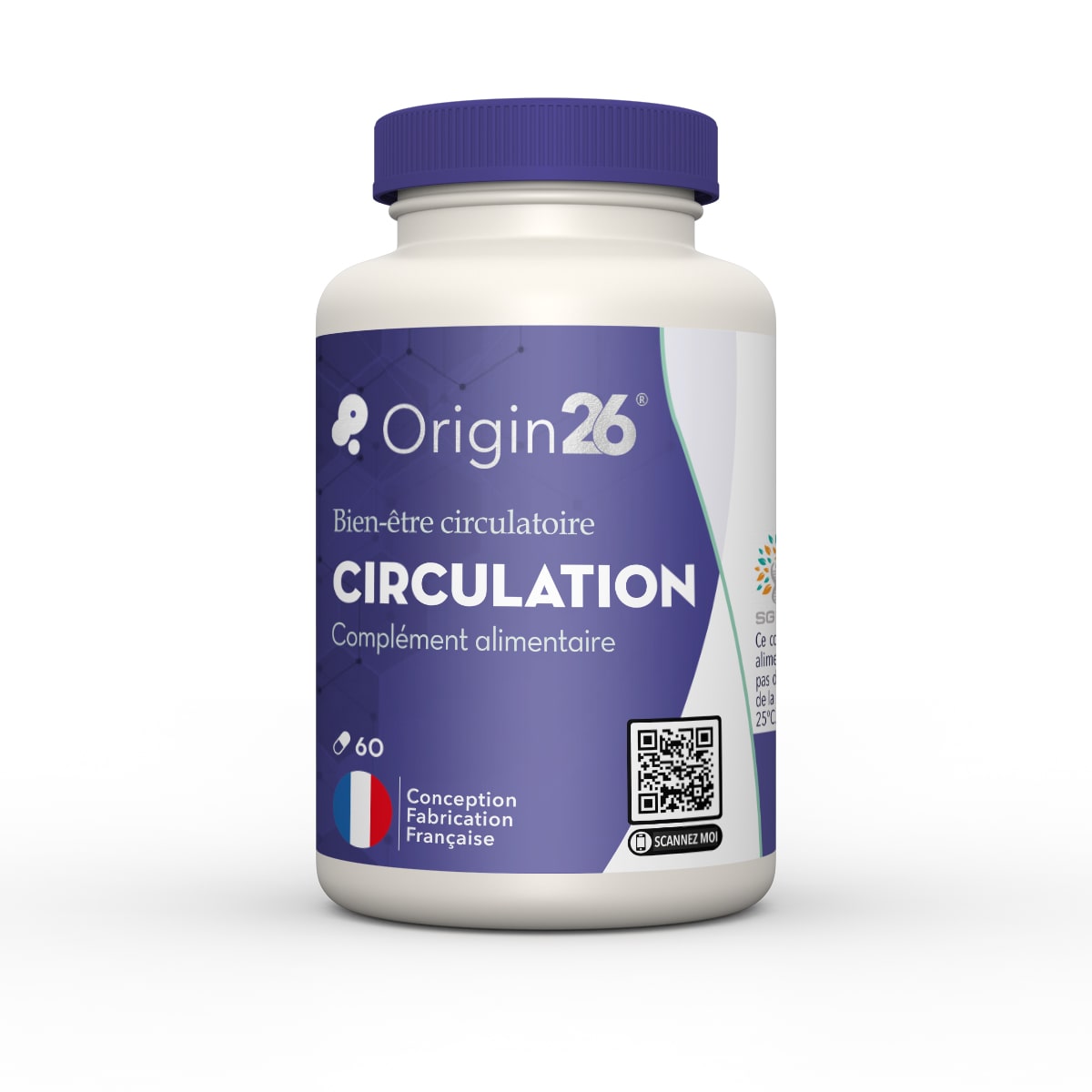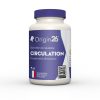Circulation
29.90€
- 100% natural veinotonic.
- Contributes to heart, vascular and venous health.
- Helps activate venous blood return from the lower limbs.
Circulation
Horse chestnut supports circulation, recommended in case of venous insufficiencies, venotonics, relieves heavy legs, tones up circulation.
Circulation is a natural veinotonic supplement based on horse chestnut. Thanks to its exceptional richness in escin, it helps to improve blood circulation and helps to reduce the circumference of the legs.
Who is Horse Chestnut for?
Horse chestnut is intended for people who are victims, occasionally or regularly, of the following symptoms:
- heavy leg sensations;
- pain in the legs or feet;
- swollen thighs and calves (especially in the evening);
- day or night cramps;
- itching in the lower limbs;
- frequent oedemas;
- tingling of the legs;
- recurrent tingling.
It is estimated that 25% of women are condemned by one of these symptoms on a regular basis, and about 10 to 15% of men.
What is horse chestnut?
Horse chestnut is the fruit of the horse chestnut, a tree native to the Balkans (Bulgaria and Albania in particular), which has become ornamental throughout Europe.
We traditionally use its whole seeds (sometimes the same leaves and bark), but the discovery of an anticoagulant molecule, esculin, now requires the production of natural extracts free of this molecule.
On the other hand, the escin content is enhanced in Horse Chestnut because it is the active substance responsible for its effects on blood circulation.
We often tend to confuse the horse chestnut with the chestnut because of their strong morphological similarity.
What is venous insufficiency?
Venous insufficiency is characterized by a modification of the venous walls (which leads to the formation of varicose veins), hormonal variations (which leads to an increase in the elasticity of the venous walls) and dysfunctions at the level of the valves.
It results in poor flow of blood in the veins. Most of the time, the legs which are fatal, they become heavy, painful and swollen with the accumulation of blood. It happens that rather unsightly varicose veins end up forming permanently: they are damaged veins with a bluish, twisted and protruding appearance.
What are the mechanisms of action of horse chestnut vis-à-vis the blood circulation?
Escin preserves the permeability and tone of the vein wall (venotonic effect), which helps blood return to the heart, especially in the superficial capillaries.
Its effects are explained by 3 distinct mechanisms:
- It increases the level of ATP (an energy molecule whose decline is linked to chronic venous insufficiency).
- It decreases the activity of phospholipase A2, an enzyme that releases inflammatory mediators in the vessels.
- It also decreases the adhesion of neutrophils (immune cells that immobilize and aggregate on the inner surface of blood vessels) and inhibits the activity of an enzyme that degrades the wall of capillaries (hyaluronidase).
Petit-holly (or prickly broom) to relieve venous insufficiency and heavy legs
The rhizome of butternut holly contains many substances from the flavonoid family, some of which have been further studied: ruscogenin, neoruscogenin, ruscin and ruscoside. In studies on cell cultures or on animals, these substances have shown properties related to the tone and elasticity of the veins. A cross-analysis confirms some efficacy of buttercup extracts in reducing the manifestations of venous insufficiency, in particular the feeling of heavy legs.
Witch hazel to relieve venous insufficiency and heavy legs
The leaves and bark of witch hazel contain a wide variety of tannins and flavonoids. In studies in cell cultures or in animals, these substances have shown vasculoprotective properties. The WHO recognizes the traditional use of witch hazel in the treatment of varicose veins.
Red vine to relieve venous insufficiency and heavy legs
Red vine leaf extracts contain flavonoids (polyphenols) and a large amount of anthocyanosides, which have vasculoprotective effects close to those of vitamin P. Two clinical trials have shown the effectiveness of leaf or seed extracts of red vine in the treatment of manifestations of venous insufficiency. This usage is recognized as well established.
Blackcurrant to relieve venous insufficiency and heavy legs
Blackcurrant leaves and berries contain anthocyanosides with properties close to those of vitamin P. They also contain flavonoids.






Reviews
There are no reviews yet.